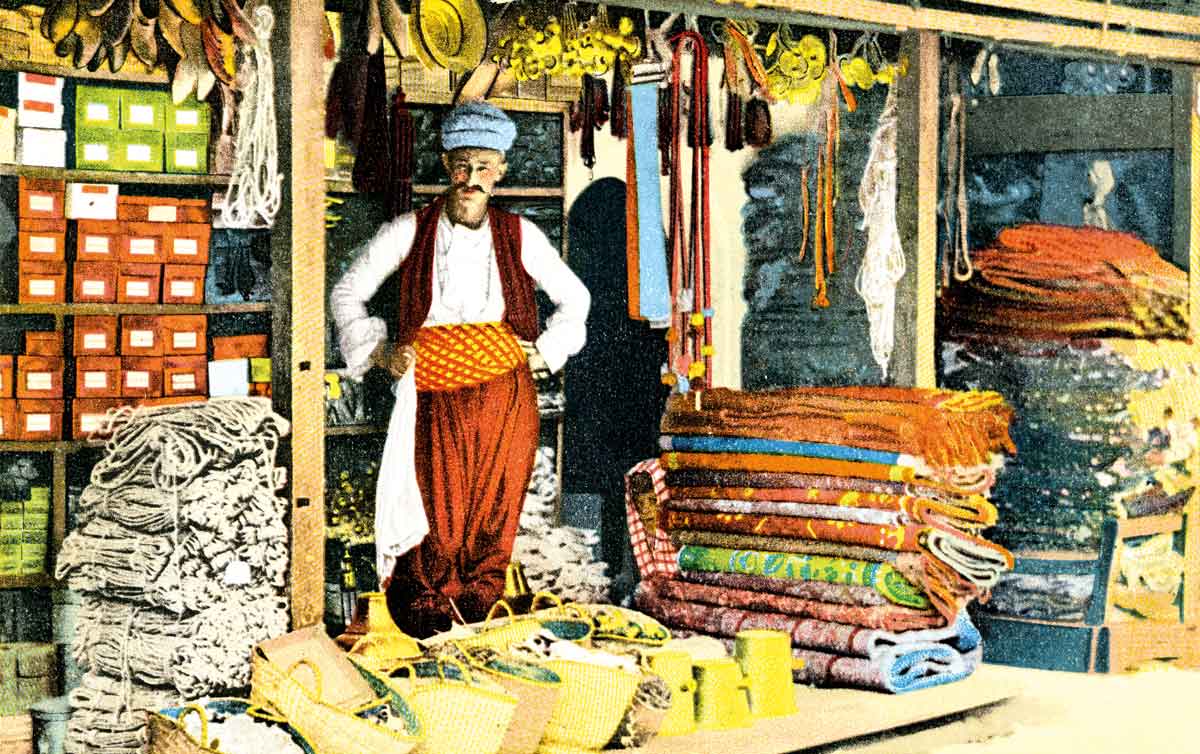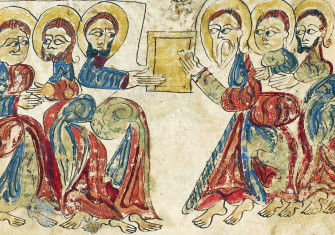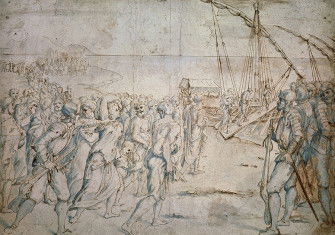Minority Report
Who are Europe’s indigenous Muslims?

In November 2017 the Pew Research Center published an eyebrow-raising report on Europe’s Muslim population: with Europe defined as ‘the EU plus Norway and Switzerland’, it showed the western Balkans as a blank space, neither European nor Muslim. In Muslims and the Making of Modern Europe Emily Greble embarks on an ambitious journey to repopulate that absence with more than 500 years of history.
Who are Europe’s indigenous Muslims? The Ottoman Empire arrived in Europe in the 15th century, famously besieging Vienna twice, yet its territorial gains shrank over time, accelerating in the 19th century when Christian states began to spring up in the Balkans. In 1878 the Treaty of Berlin (‘for the Settlement of the Affairs of the East’) outlined the future relationship between the Ottomans, recently defeated in the Russo-Turkish War, and European powers. The treaty recognised Serbia, Montenegro and Romania as independent states and granted Muslims within them full political, economic and civil rights, even while nation-building rhetoric scapegoated them as backward remnants of an antiquated, vanquished empire. Muslims were able to vote and their representatives entered national assemblies, as governments simultaneously increased their control over mosques, schools and land, while privileging Christian citizens.
These trends also occurred in Greece, Bulgaria and Cyprus, but Greble’s focus is the former Yugoslav lands. The silver lining for Muslims in this part of Europe was that they retained control of the Islamic (Shari’a) courts that regulated family law and pious endowments that funded Islamic education, allowing Islamic jurists to act as intermediaries with state bureaucracies. Because of the importance of Islamic judges, Muslims began to emerge as a legally recognised minority in the eyes of both the national administration and the population at large. By 1900 Muslim loyalties remained split as Ottoman notions of subjecthood, plans for pan-Islamic solidarity, and European constitutional ideas collided in the shaping of a multifaceted Muslim worldview.
The Balkan Wars of 1912 and 1913 – in which Christian Balkan nations defeated the Ottomans (first) but then joined forces with them against former ally Bulgaria (second) – and the First World War were a watershed. Muslims were brutally massacred or expelled and refugees were denied repatriation, while those remaining were stripped of property, voting rights or employment. Europe’s Muslims mobilised to offer each other assistance and some turned towards Islam in a stricter way than before. Some Muslims actively worked with state authorities; others staged armed rebellions or petitioned foreign governments. Because the architects of the postwar international order emerging in Paris prioritised self-determination and minority rights, after the creation of the Kingdom of Serbs, Croats and Slovenes in 1918, Muslim leaders pursued the official designation of their co-religionists as a minority. The kingdom’s 1920 constitution stipulated the right of Muslims to refer to Shari’a law in family and inheritance cases.
The Kingdom of Serbs, Croats and Slovenes became Yugoslavia in 1929. The Belgrade government distinguished between ‘cosmopolitan’ Slavic-speakers in Bosnia and Serbia and ‘wild’ Albanian and Turkish-speakers in Kosovo and Macedonia. Islamic institutions continued to play a key role, despite the ferocious attempt of the dictator King Alexander I (‘the Unifier’) to subsume Muslims as Yugoslavs. Muslim reformists and traditionalists clashed in their visions for Islamic institutions, especially regarding education and the place of women. Varied political formations, newspaper articles and conversations with international peers showed how diverse Muslim opinions were in the face of homogenising state pressure. Alexander’s reforms pushed many towards Islamic revivalism; few Muslims lamented the disappearance of Yugoslavia in 1941.
During the Second World War Europe’s Muslims split along pro-Axis and pro-resistance lines. Islamic revivalists hoped that the Axis would empower them politically; in Bosnia a Muslim Waffen SS unit was created, the 23rd Waffen Mountain Division of the SS Kama (kama being a dagger used by Balkan shepherds). Others joined the partisans or Chetniks fighting the Germans, Italians and Bulgarians. When, in 1945, Tito started building a socialist state based on unity and brotherhood, Muslims negotiated their place in this second Yugoslavia. Some progressives believed that socialism was the path toward emancipation from conservative Islam, while others mounted resistance, stood trial and were executed.
Yugoslavia’s 1946 socialist constitution ended the Shari’a judiciary, radically resetting the relationship between Muslims and the state, which took over Islamic institutions. The Muslim population was now seen as part of the Yugoslav whole, even as Muslims remained split between localities, languages, religious affiliations and political opinions (though the same could be said of Yugoslavia’s non-Muslim population).
The salient strength of this book is Greble’s foregrounding of Muslim voices and insistence on defining them as European. Developments in Montenegro occurred in Europe, madrasa staff in Tuzla or Islamic revivalists in Sarajevo were Europeans, while pervading discourses of liberalism and self-determination were exclusionary from the start. Readers should relish her triumphant restoration of Muslim agency: village leaders trying to recover seized properties, demand repatriation, or request autonomy; Islamic scholars insisting on respect for religious traditions; progressives castigating conservative imams and muftis; Muslim women challenging their husbands in court. In the end, we discover a European history that includes Islam and, in the process, might need to rethink what exactly ‘Europe’ is.
Muslims and the Making of Modern Europe
Emily Greble
Oxford University Press 360pp £26.99
Buy from bookshop.org (affiliate link)
Theodora Dragostinova is the author of The Cold War from the Margins: A Small Socialist State on the Global Cultural Scene (Cornell University Press, 2021).






